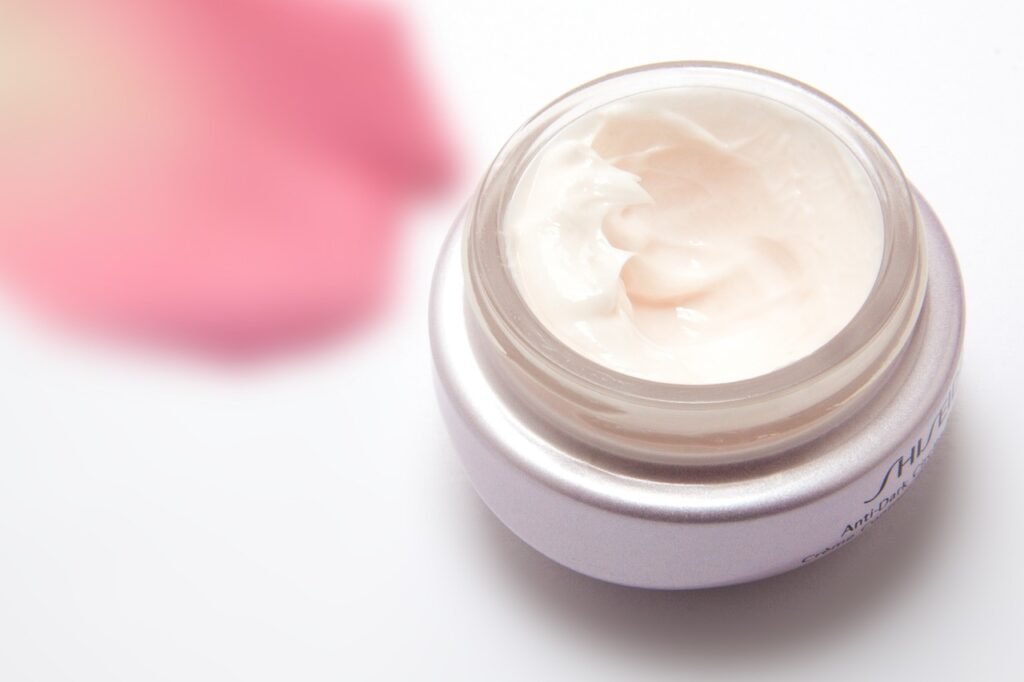

In the realm of skincare and beauty, one ingredient has risen to prominence for its remarkable ability to hydrate and rejuvenate the skin—hyaluronic acid and its benefits. Often referred to as the “fountain of youth,” hyaluronic acid has become a staple in the skincare routines of many.
This article delves into the hyaluronic acid benefits, forms, usages, and tips surrounding this magical skincare ingredient.
Benefits of Hyaluronic Acid:
1. Intense Hydration:


Hyaluronic acid is a powerhouse when it comes to hydration. It has the remarkable ability to hold up to 1,000 times its weight in water, making it an ideal ingredient for maintaining skin moisture. This intense hydration not only plumps the skin but also helps reduce the appearance of fine lines and wrinkles.
2. Anti-Aging Properties:


As a natural component of the skin, hyaluronic acid plays a crucial role in maintaining its elasticity and firmness. Using skincare products like hyaluronic acid serum can contribute to a more youthful complexion by promoting collagen synthesis and preventing the loss of skin suppleness.
3. Soothing and Calming:
Hyaluronic acid is known for its soothing properties, making it suitable for all skin types, including sensitive skin. It helps calm redness and irritation, providing relief to those with various skin concerns such as rosacea or dermatitis.
4. Versatile Compatibility:
Whether you have dry, oily, or combination skin, hyaluronic acid is a versatile ingredient that can benefit all skin types. It regulates moisture levels without clogging pores, making it an excellent choice for individuals with acne-prone skin.
How is Hyaluronic Acid used:
1. Daily Skincare Routine:


Incorporate hyaluronic acid into your daily skincare routine by using a hyaluronic acid serum or moisturizer. Apply it after cleansing and toning, allowing the product to penetrate the skin before applying other skincare products.
2. Targeted Treatments:
For specific concerns like fine lines or dry patches, opt for targeted hyaluronic acid treatments. These may include spot treatments or serums designed to address particular areas of the face.
Tips for Using Hyaluronic Acid:
1. Layering:
Hyaluronic acid works well when layered with other skincare ingredients. Consider combining it with antioxidants like vitamin C for added skin benefits.
2. Seal in Moisture:
To maximize the benefits of hyaluronic acid, apply a moisturizer over the serum to seal in the hydration. This creates a barrier, preventing moisture loss throughout the day.
3. Consistent Use:
Consistency is key when using hyaluronic acid. Incorporate it into your routine regularly to experience the full spectrum of benefits over time.
Hyaluronic Acid mistakes:


While hyaluronic acid is a powerful and beneficial skincare ingredient, there are common mistakes that individuals may make when incorporating it into their routines. To ensure you get the most out of this magical ingredient, it’s essential to be aware of these potential pitfalls:
1. Skipping Patch Tests:
Before fully integrating a new hyaluronic acid product into your skincare routine, it’s crucial to conduct a patch test. This helps you identify potential allergic reactions or sensitivities.
Applying a small amount of the product on a discreet area, such as the inner wrist, and waiting 24 hours allows you to gauge your skin’s reaction.
2. Using Hyaluronic Acid on Dry Skin:
Hyaluronic acid is renowned for its ability to draw in and retain moisture. However, if applied to extremely dry skin without prior hydration, it can have the opposite effect, pulling moisture from the deeper layers of the skin and causing dryness. To prevent this, always apply hyaluronic acid on damp skin or use a hydrating toner before application.
3. Overlooking Product Compatibility:
Hyaluronic acid is generally compatible with various skincare ingredients. However, when combined with certain active ingredients, such as retinol or vitamin C, it can enhance their effects. While this can be beneficial, it’s important to be cautious, especially for those with sensitive skin.
Check with a dermatologist if you’re unsure about the compatibility of your skincare products.
4. Applying Hyaluronic Acid on Unexfoliated Skin:
For hyaluronic acid to be most effective, it’s essential to start with a clean canvas. Regular exfoliation helps remove dead skin cells, allowing hyaluronic acid to penetrate and hydrate the skin more effectively. Include gentle exfoliation in your routine to optimize the benefits of hyaluronic acid.
5. Using Too Much Product:
A little hyaluronic acid goes a long way. Using excessive amounts of the product won’t necessarily yield better results and may lead to product pilling or a sticky residue on the skin. Follow the recommended usage instructions and adjust based on your skin’s needs.
6. Neglecting Sunscreen:
Hyaluronic acid helps retain moisture, but it doesn’t provide sun protection. Neglecting sunscreen can expose your skin to harmful UV rays, potentially negating the positive effects of hyaluronic acid. Always incorporate a broad-spectrum sunscreen into your daytime routine, especially when using hyaluronic acid.
7. Assuming All Hyaluronic Acid Products Are the Same:
Not all hyaluronic acid products are created equal. Molecular weight can vary among different formulations, impacting how deeply the acid penetrates the skin.
High molecular weight hyaluronic acid sits on the skin’s surface, providing immediate hydration, while low molecular weight penetrates deeper, offering longer-term benefits. Choose products based on your specific skincare needs.
8. Using Hyaluronic Acid in Harsh Climates:
In extremely dry or cold climates, hyaluronic acid may not be sufficient on its own to combat dehydration. It’s essential to layer it with a moisturizer to create a protective barrier and prevent water loss in harsh environmental conditions.
Avoiding these common mistakes can help you make the most of hyaluronic acid’s incredible benefits. By being mindful of your skincare routine, product compatibility, and environmental factors, you can ensure that hyaluronic acid contributes positively to your skin’s health and appearance.
If in doubt, consulting with a skincare professional can provide personalized guidance based on your specific skin type and concerns.
Forms of Hyaluronic Acid:


1. Serum:
Hyaluronic acid serums are popular for their lightweight consistency and easy absorption. Serums are designed to deliver a concentrated dose of hyaluronic acid, making hyaluronic acid serum effective for targeting specific skincare concerns, such as dehydration and fine lines.
2. Moisturizers:
Many moisturizers now incorporate hyaluronic acid into their formulations to provide long-lasting hydration. These moisturizers are suitable for daily use, helping to maintain skin moisture levels and create a smooth, supple complexion.
3. Sheet Masks:
Sheet masks infused with hyaluronic acid offer a luxurious and hydrating treatment. The sheet helps to lock in the active ingredients, allowing for a more intensive and targeted hydration experience.
Hyaluronic acid stands as a skincare marvel, offering a myriad of benefits for those seeking hydration, anti-aging effects, and overall skin health. Whether in the form of serums, moisturizers, or sheet masks, integrating this powerful ingredient into your skincare routine can unlock a new level of radiance and youthfulness.
By understanding its benefits, choosing the right forms, and following simple tips, you can harness the magic of hyaluronic acid for a revitalized and glowing complexion.
Read This: Best Morning Routine Ideas
